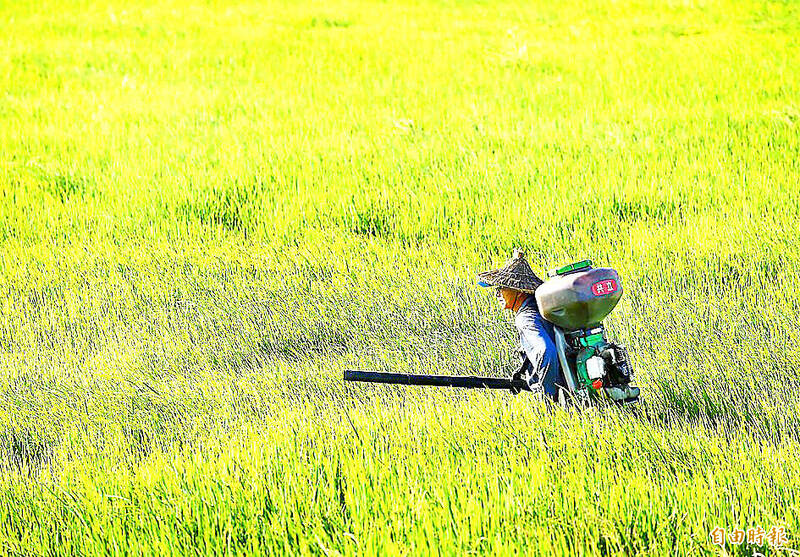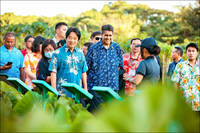《TAIPEI TIMES》Food self-sufficiency rate at 18-year low: ministry

A farmer works in a field in an undated photograph. Photo: Chu Pei-hsiung, Taipei Times
TREND: Consumption of meat and poultry has risen sharply over the past decade due to higher demand for protein from health enthusiasts and ‘Western-style diets’
Staff writer, with CNA
The nation’s food self-sufficiency rate dropped to 30.3 percent last year, the lowest figure in 18 years, a report by the Ministry of Agriculture showed.
The 30.3 percent figure refers to how much of people’s total caloric intake in Taiwan derived from foods produced domestically.
Last year’s figure represented a drop from 30.8 percent in 2022 and 33.0 percent in 2013, to its lowest level since a 30.2 percent rate was recorded in 2005, the ministry said in its latest Food Supply and Utilization Annual Report.
The main reason for the drop was a decrease in domestic production of rice — the largest single source of calories in Taiwan — caused in part by reduced irrigation to rice fields during a period of drought last year, the ministry said.
By food group, 25.5 percent of grains consumed in Taiwan last year were domestically produced, down 1.1 percentage point from 26.6 percent in 2022, the ministry said.
Meanwhile, 70.8 percent of meat consumed in Taiwan last year was raised domestically, down 2.7 percentage points from 73.5 percent in 2022, it said.
The drop in the proportion of domestic meat consumption was driven by factors including avian influenza and the modernization of pork-rearing facilities, which reduced production and led to a greater reliance on imports, the report said.
As for fresh produce, locally grown fruit accounted for 83.7 percent of total fruit consumption last year (a 0.8 percentage point increase from the previous year), while local vegetables made up 81.9 percent of the total (a 3.1 percentage point decrease), the ministry said.
The ministry’s Statistics Department said that the food self-sufficiency rate was affected not only by domestic production volume, but also by people’s consumption patterns.
In terms of the latter, the report said that per capita consumption of wheat-derived products — especially that of rice — had fallen in recent years.
The average person in Taiwan last year ate 42.07kg of rice, down from 44.96kg in 2013.
Meanwhile, consumption of wheat-derived product rose from an average of 36.47kg in 2013 to a high of 38.79kg in 2021, but dropped to 36.21kg last year, the report said.
By contrast, consumption of meat and poultry has risen sharply over the past decade, due to higher demand for protein from health enthusiasts and the adoption of more “Western-style diets,” the ministry said.
The average person in Taiwan last year ate 87.19kg of meat, up more than 15kg from 71.63kg in 2013, it said.
Consumption of fruits and vegetables remained more or less constant during that 10-year period, it added.
新聞來源:TAIPEI TIMES





















